THE STYLE OF OFFICIAL DOCUMENTS Official documents

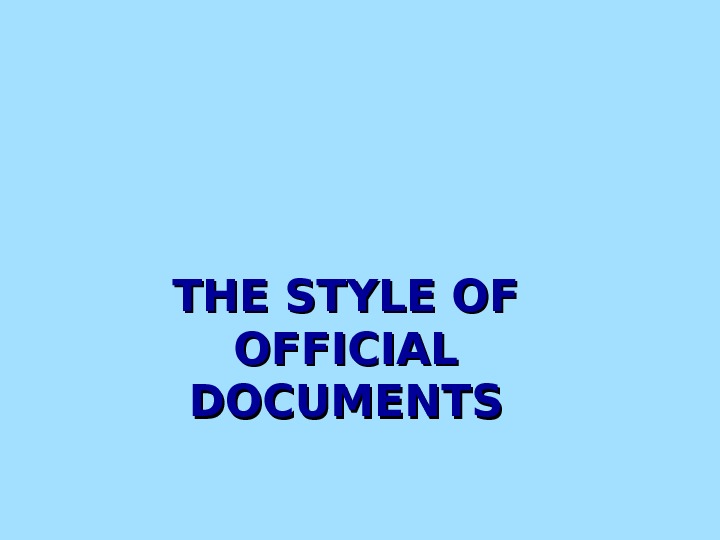
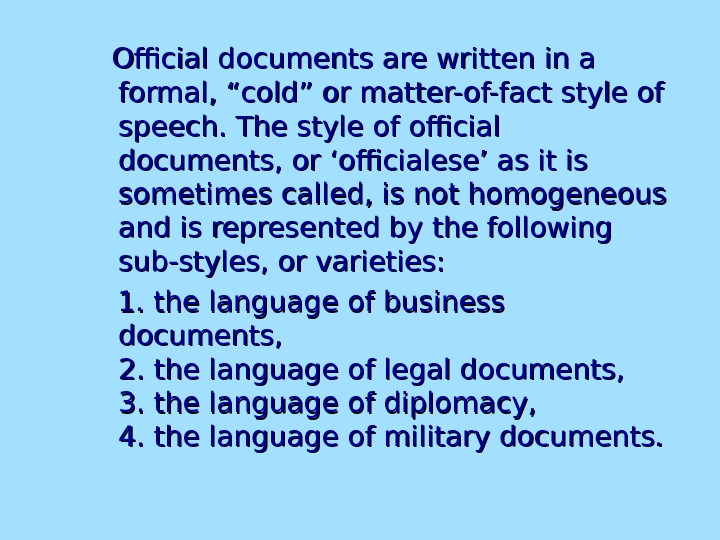
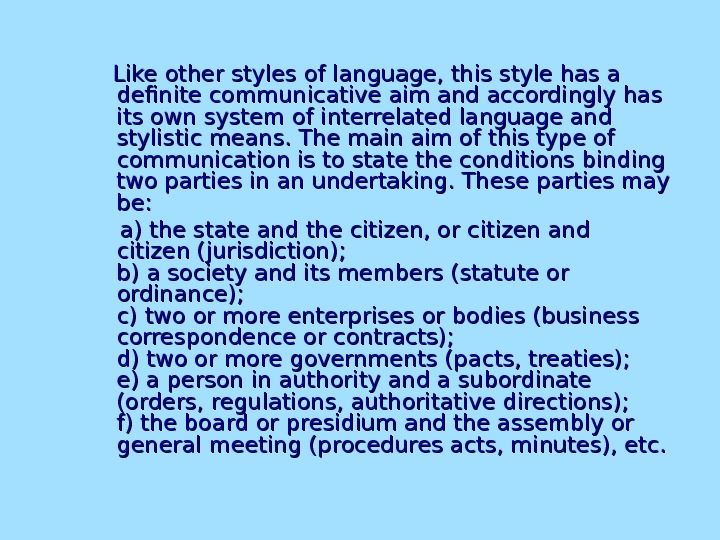
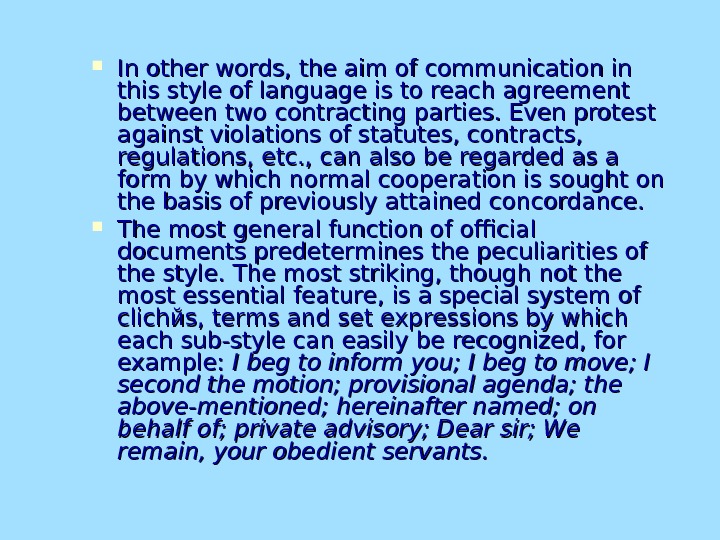
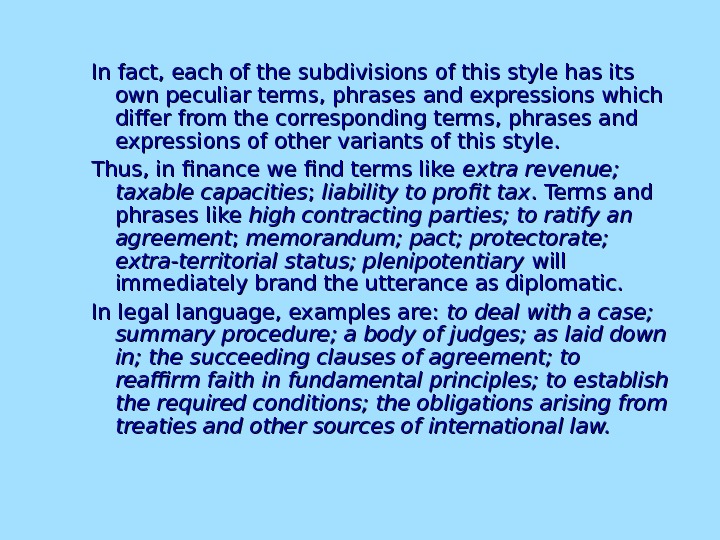
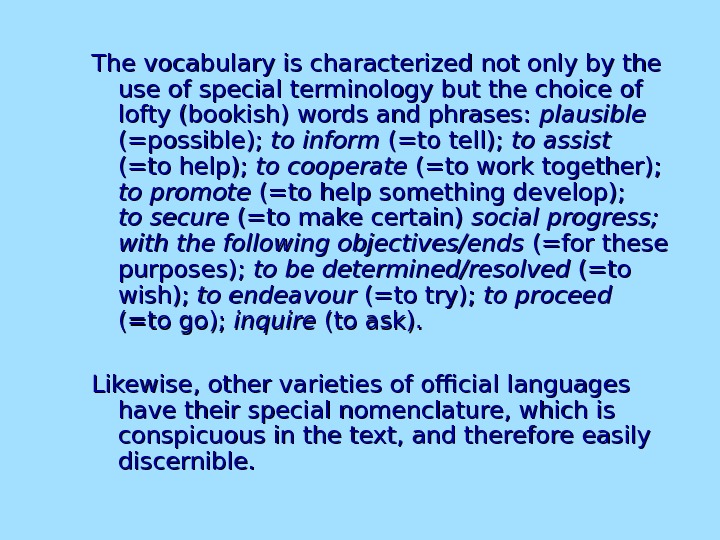
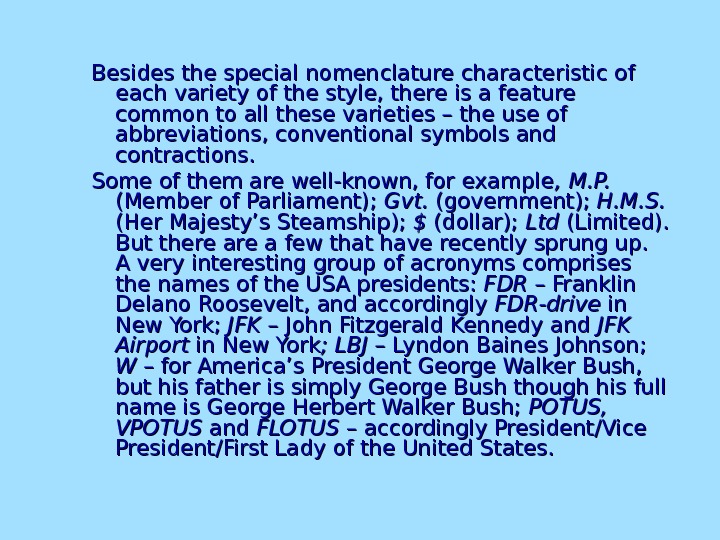
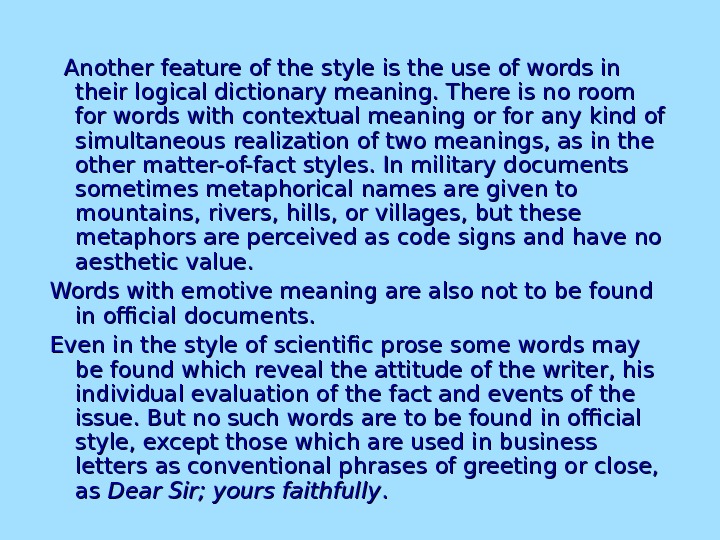
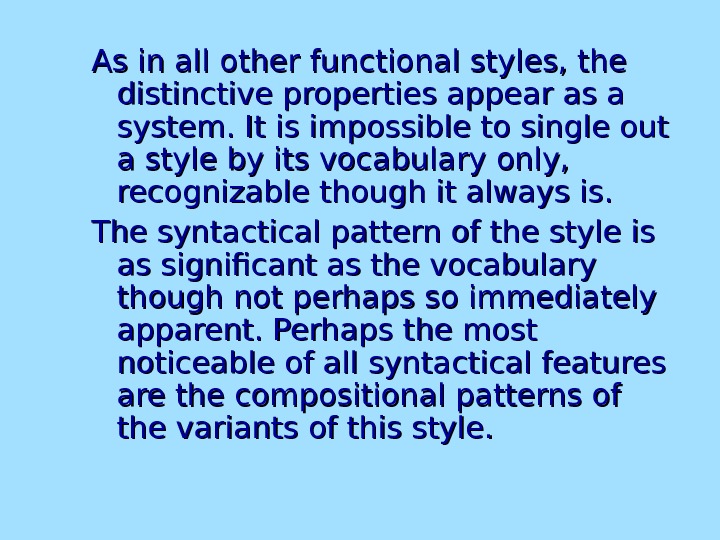

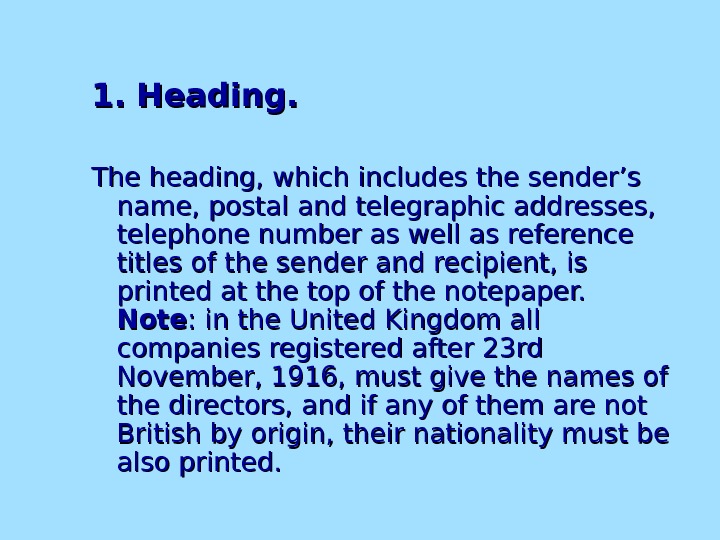
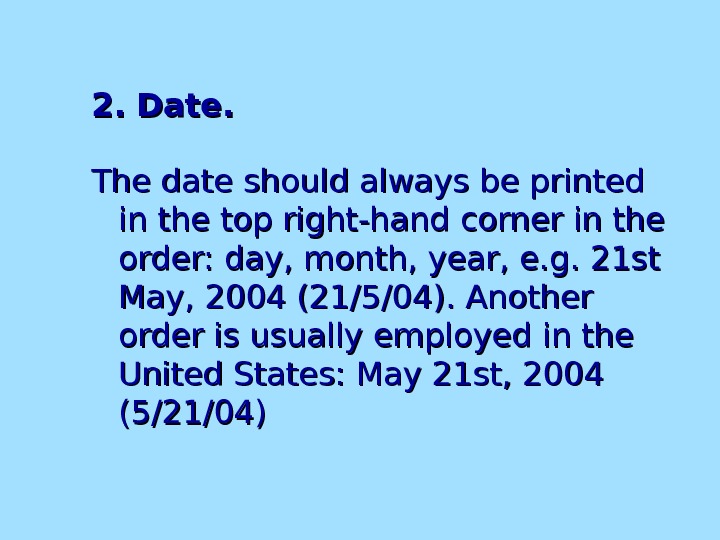
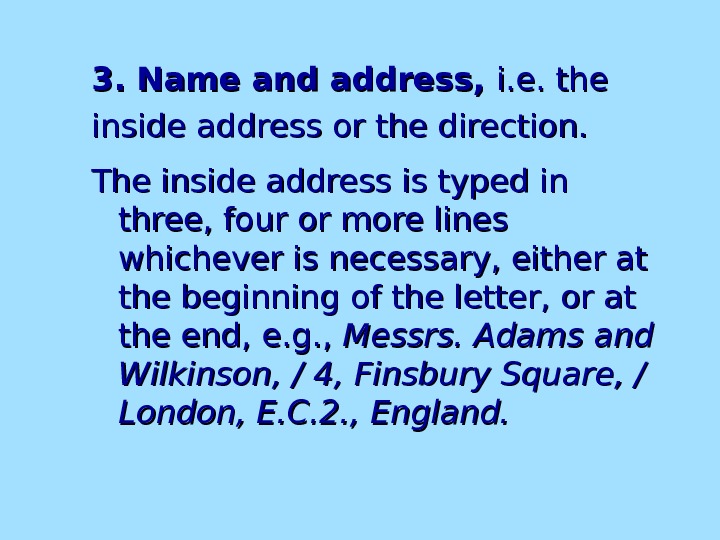
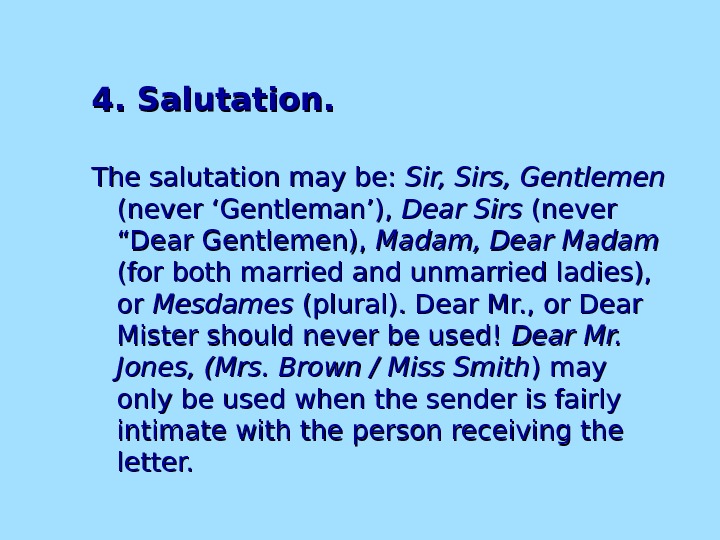
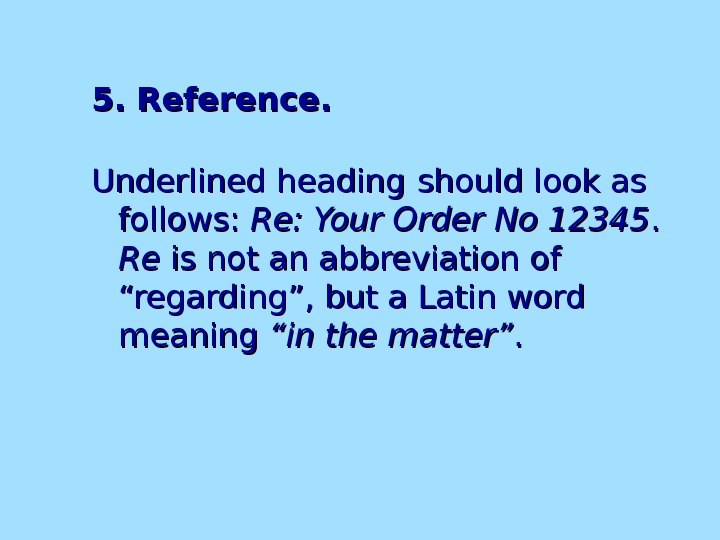

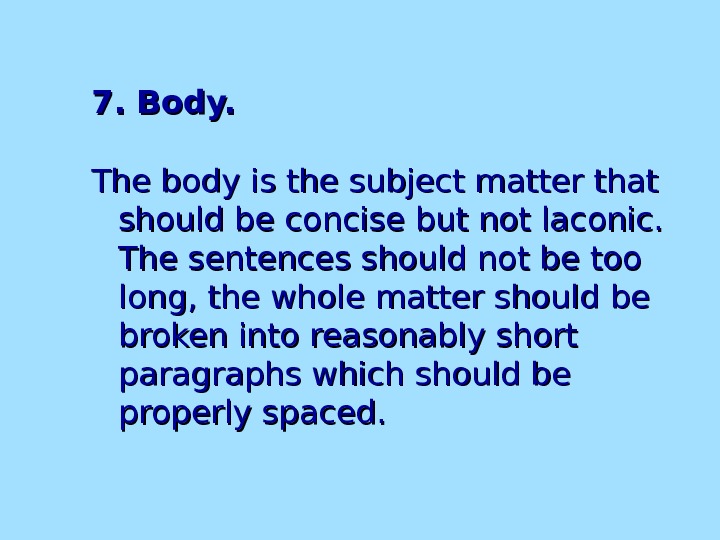


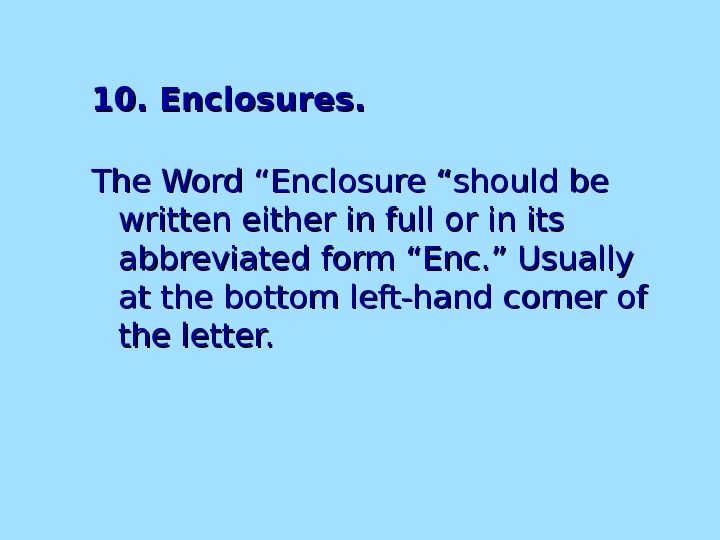
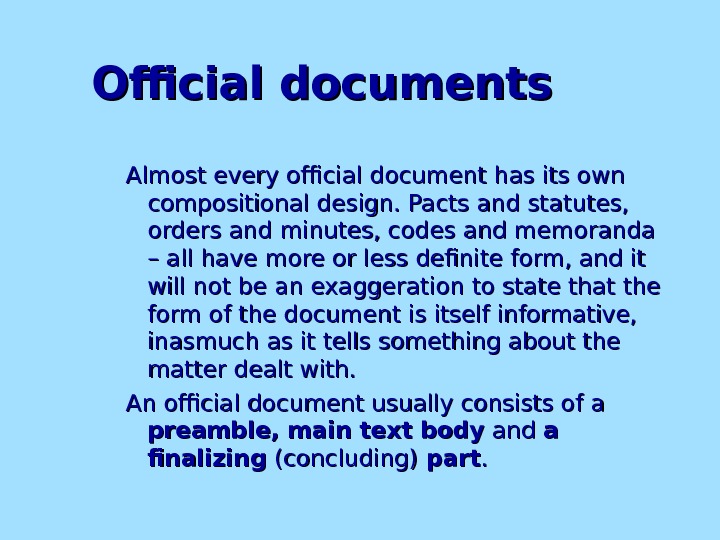
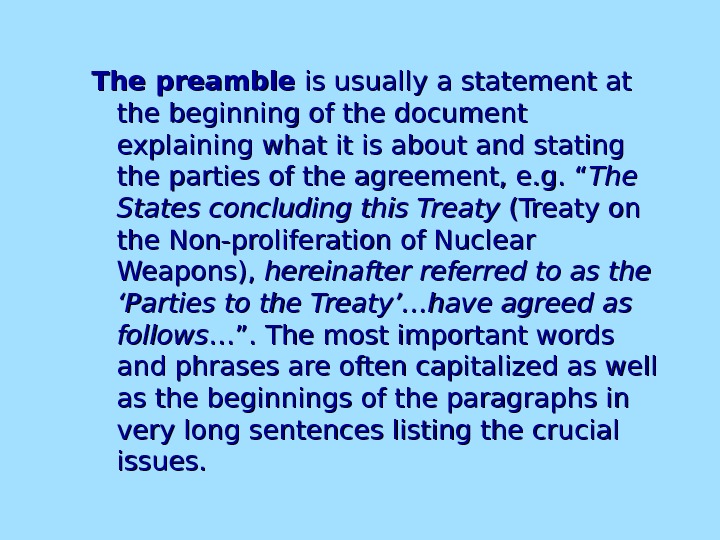

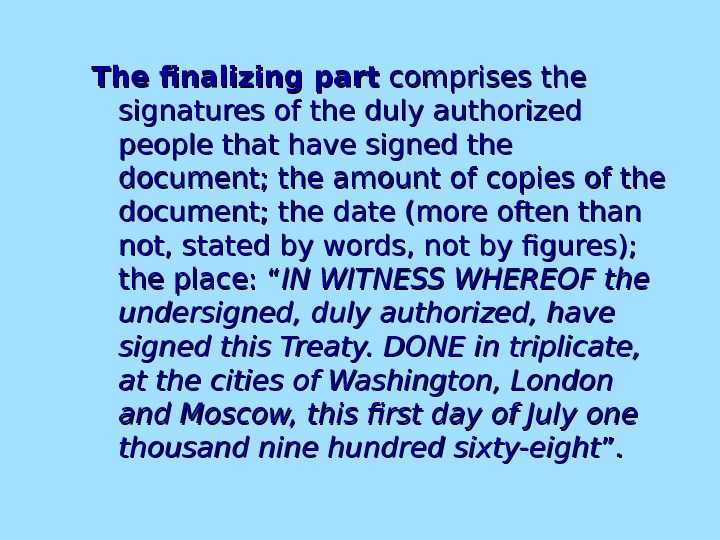
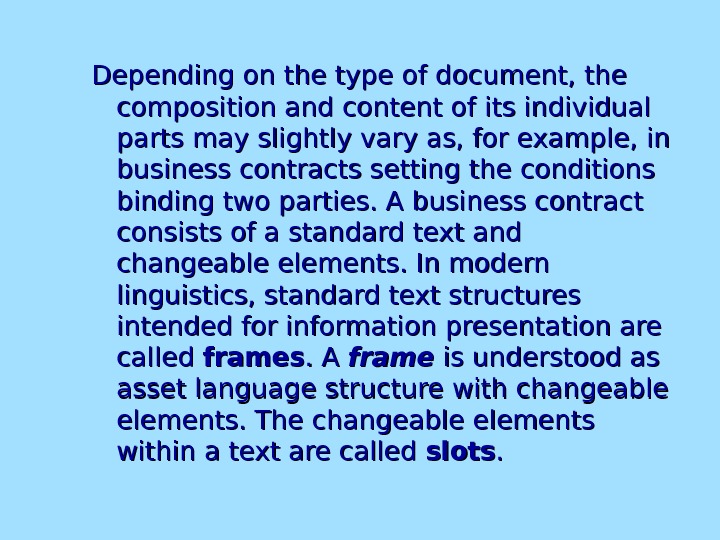


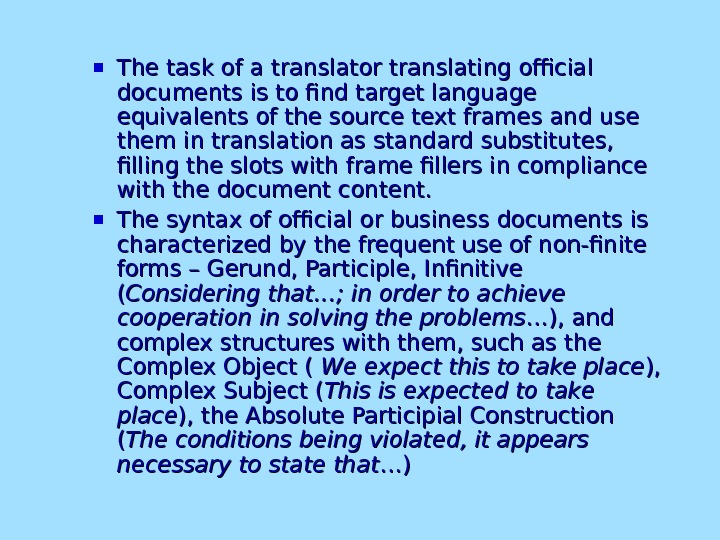

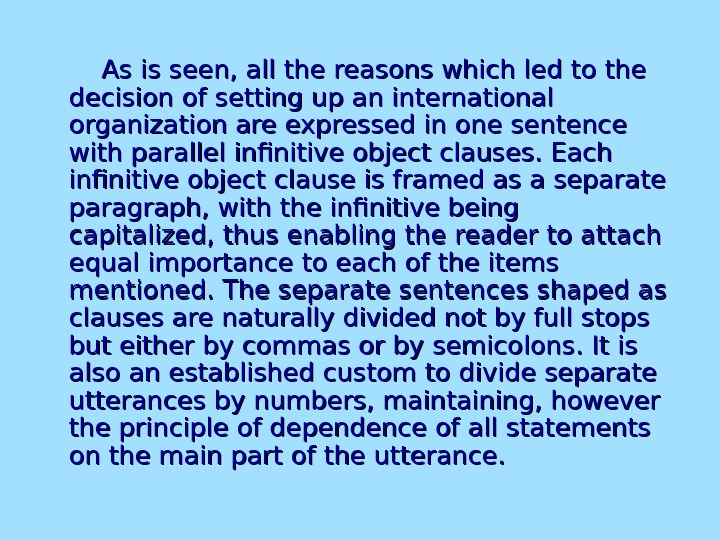
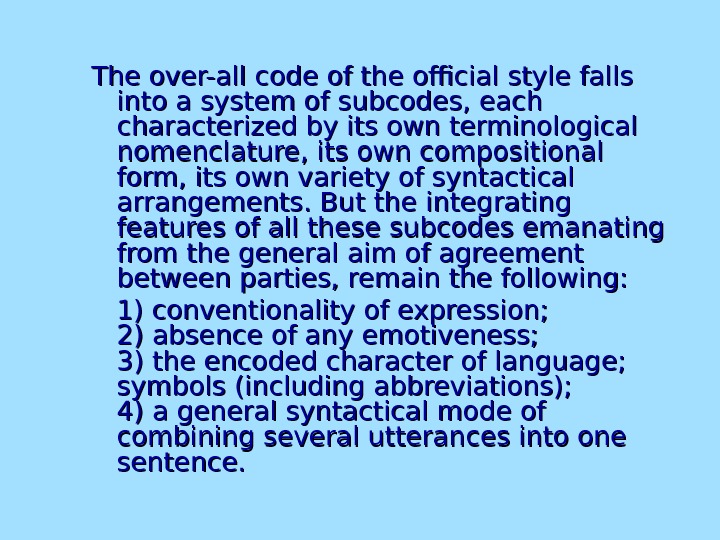

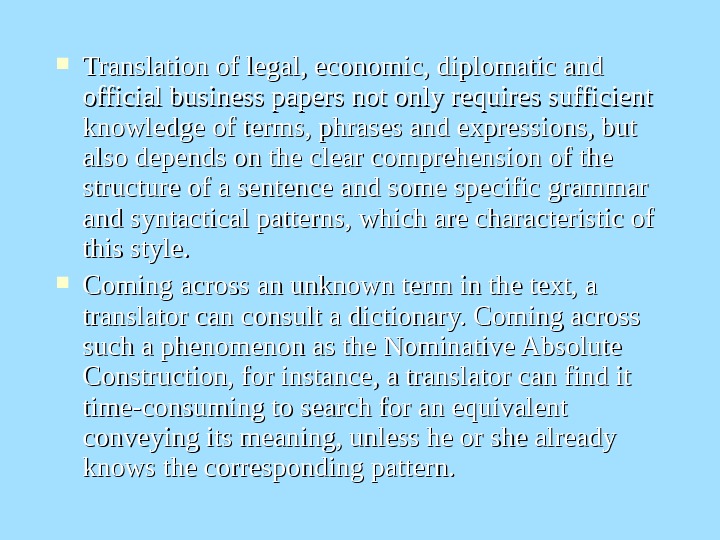
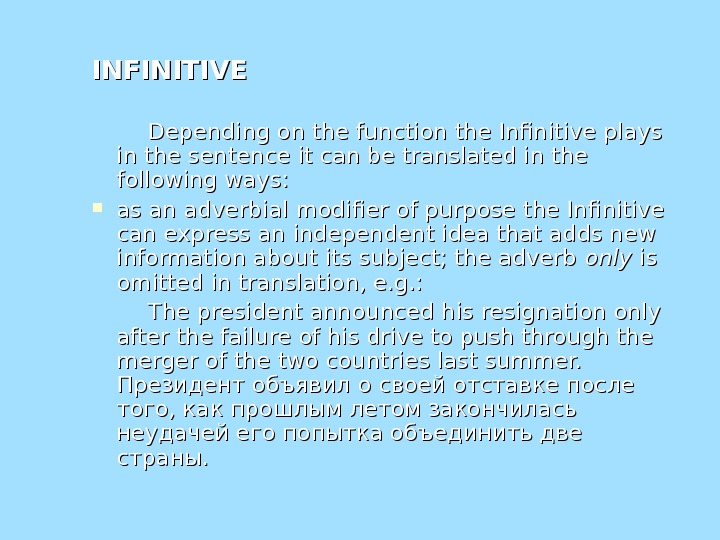

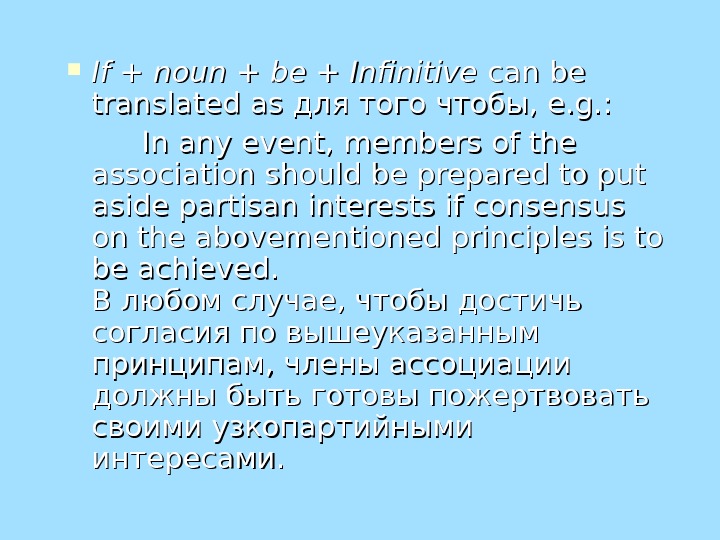
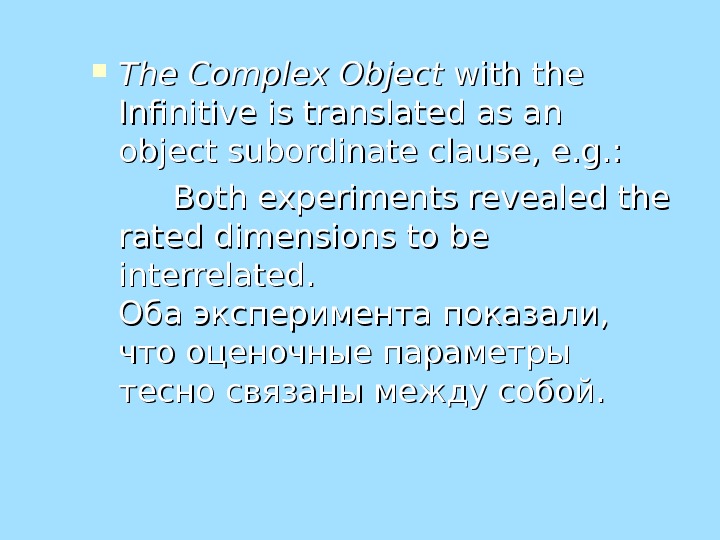
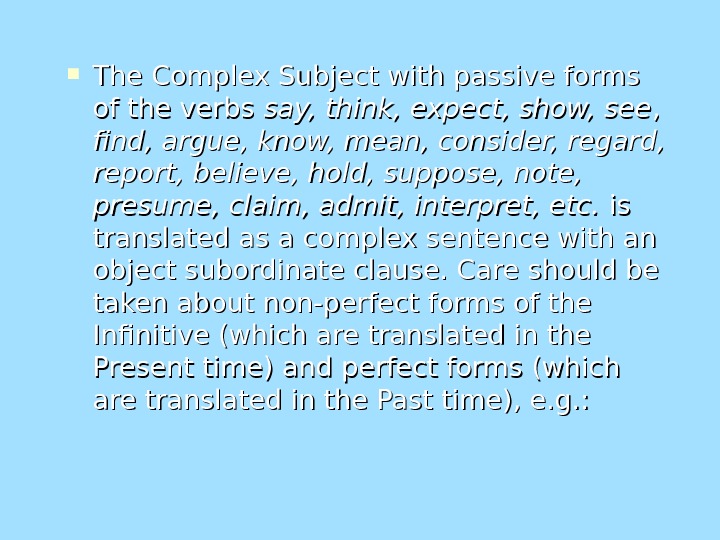
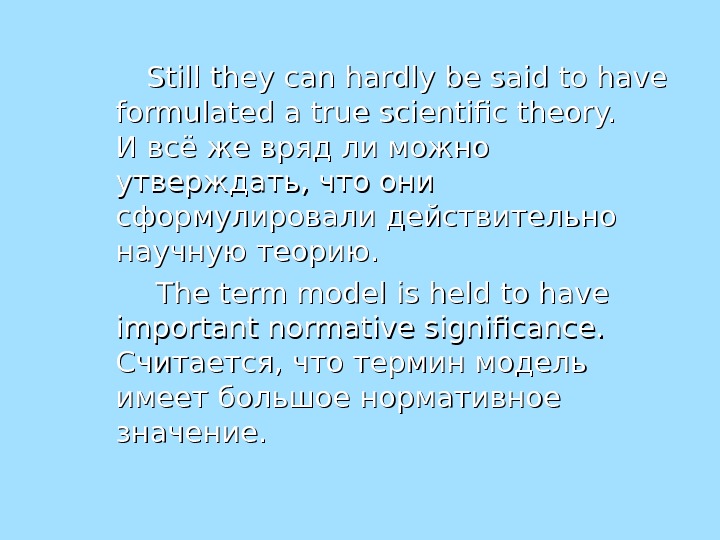
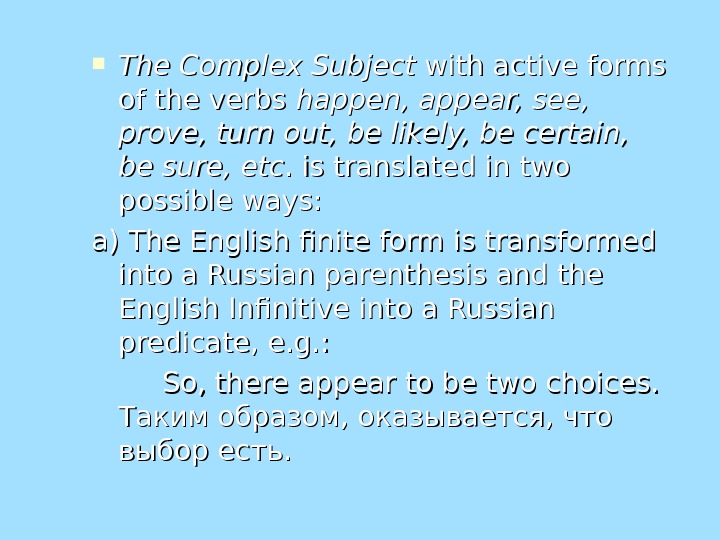

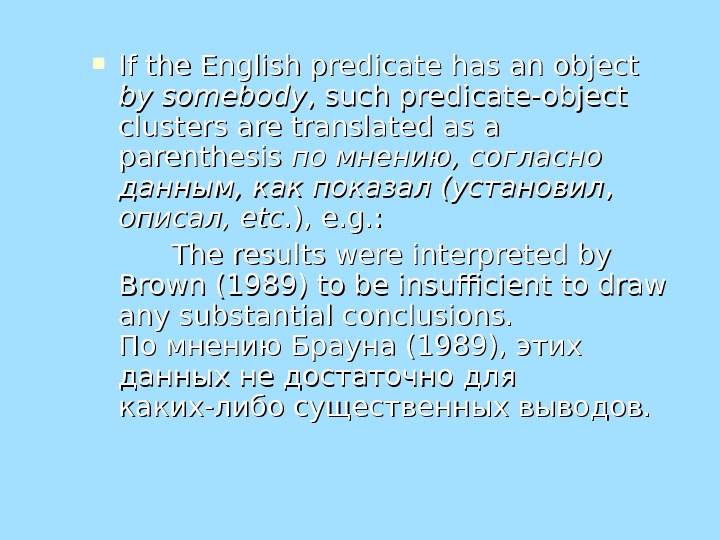
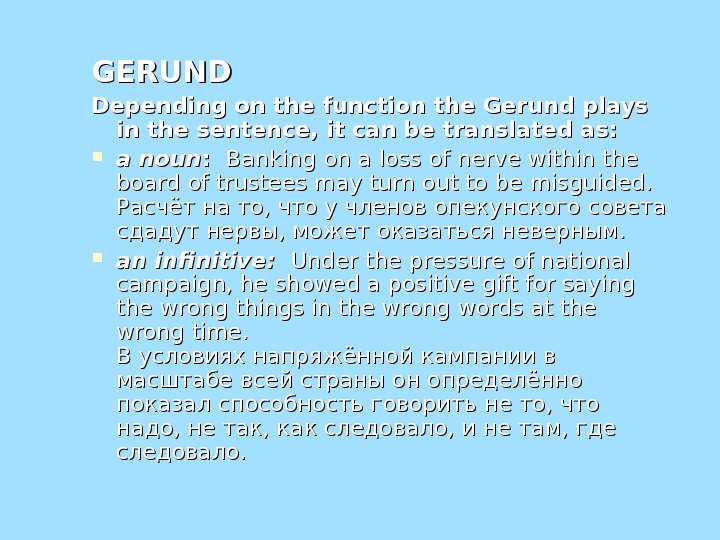
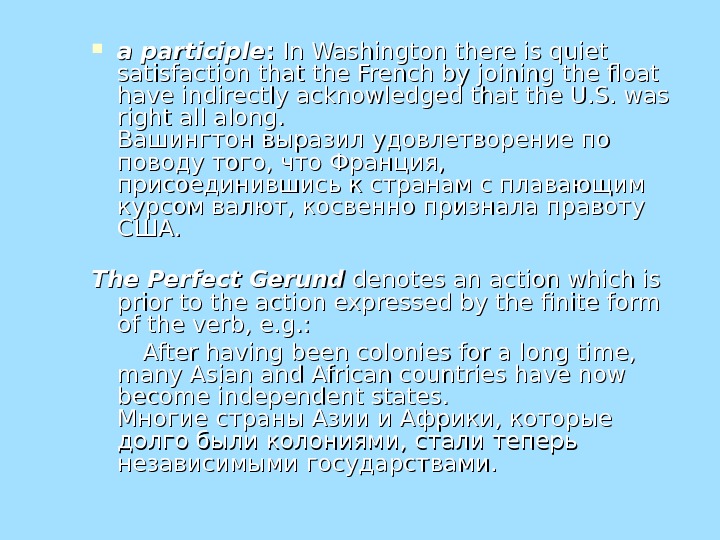
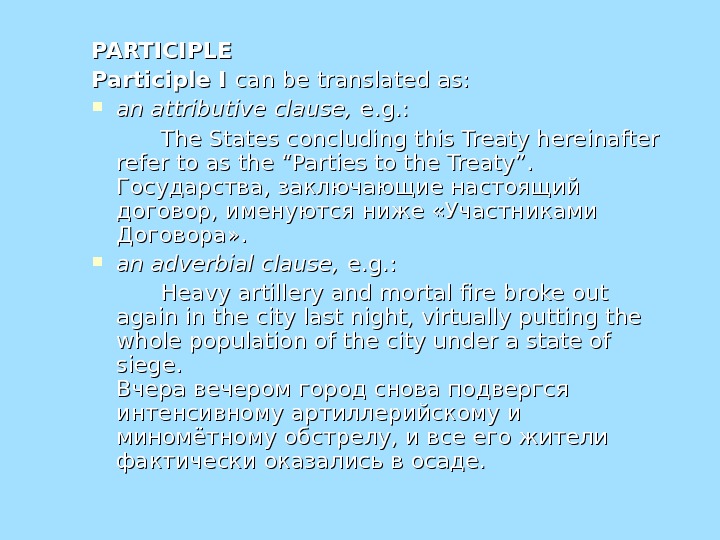

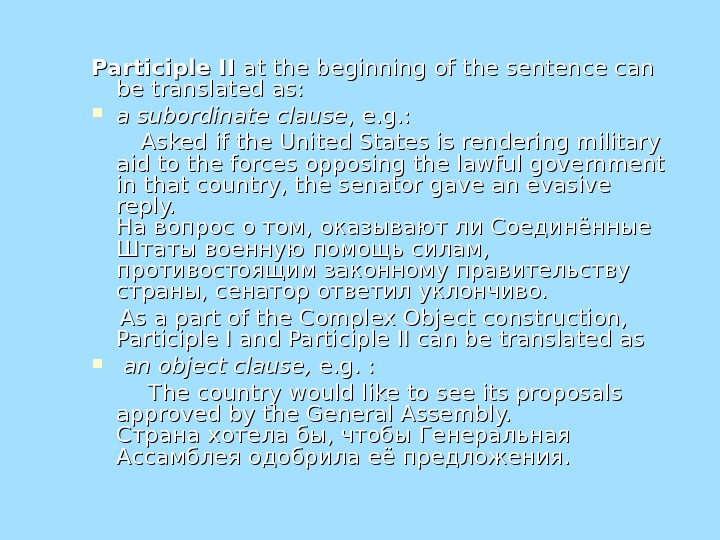
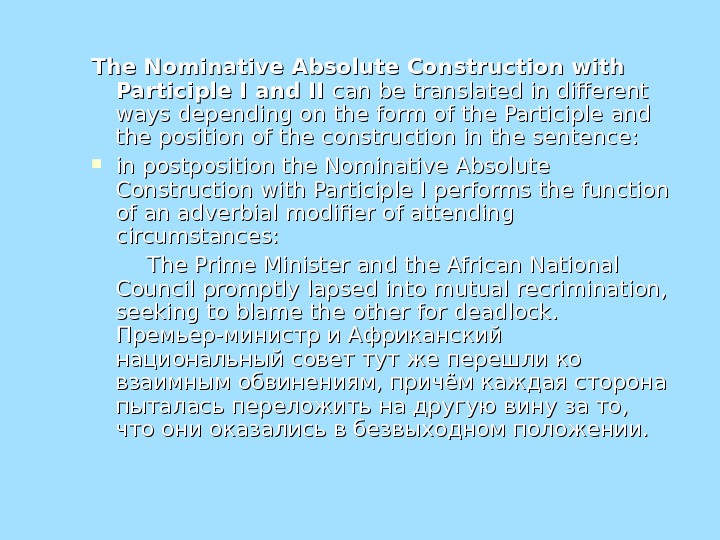
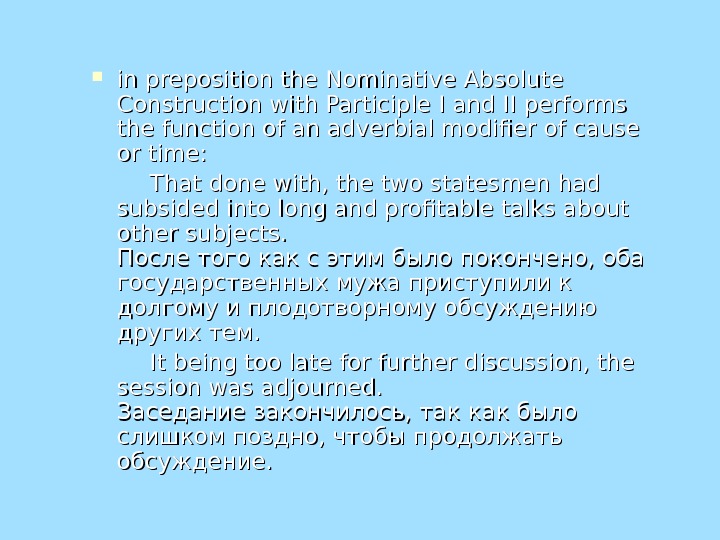
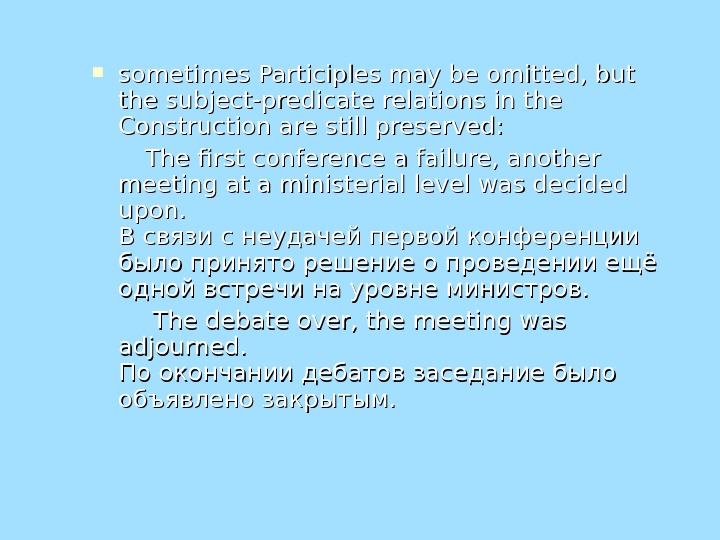
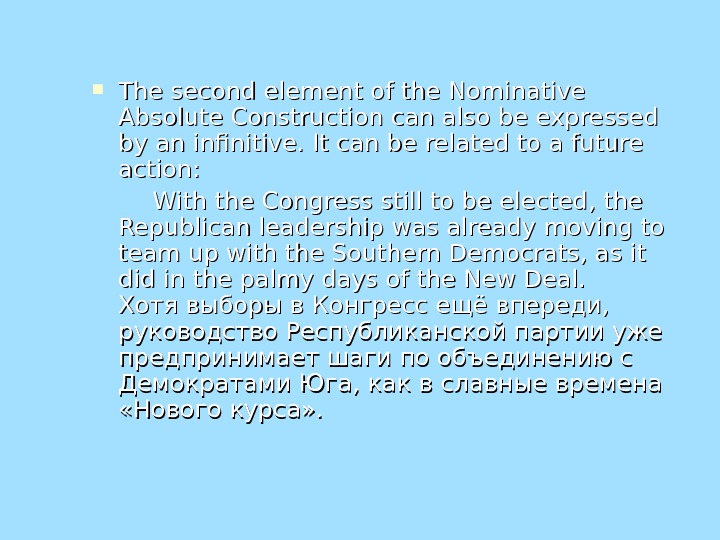
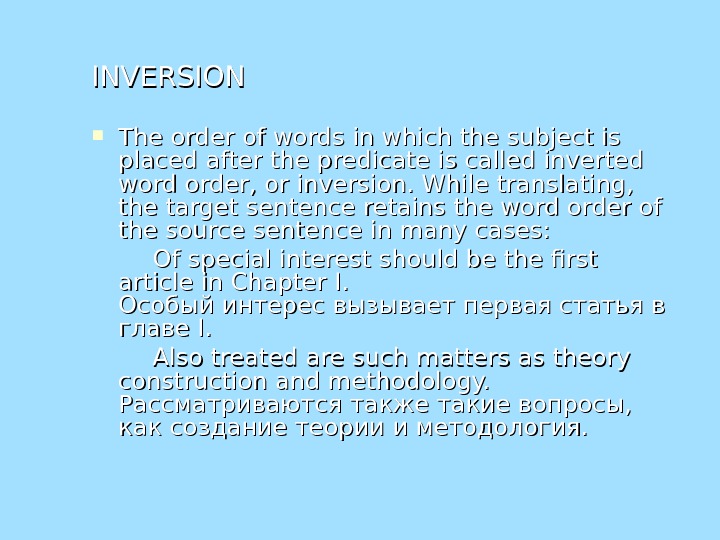
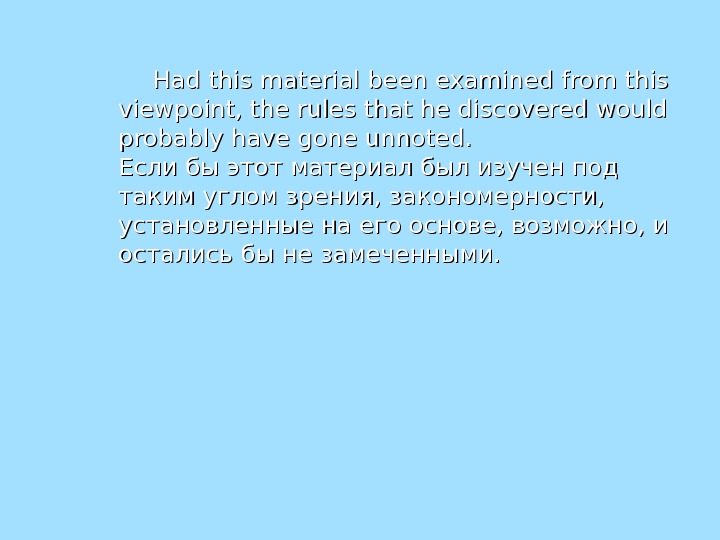
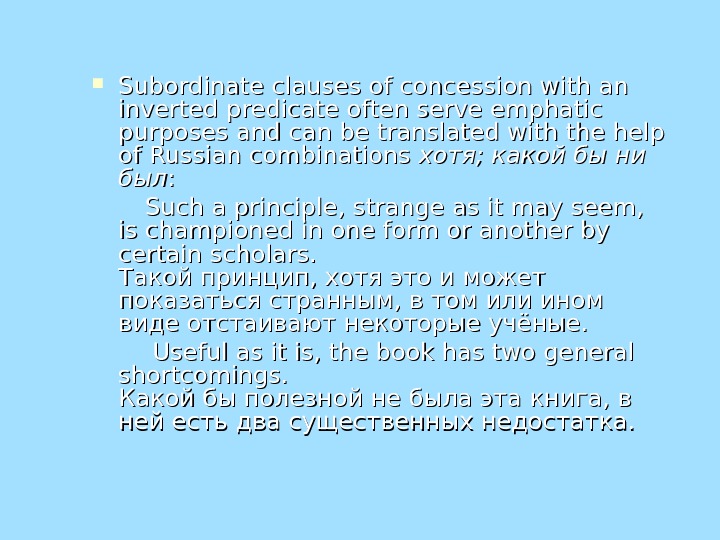
8_style_of_official_documents.ppt
- Размер: 670 Кб
- Количество слайдов: 54
Описание презентации THE STYLE OF OFFICIAL DOCUMENTS Official documents по слайдам
 THE STYLE OF OFFICIAL DOCUMENTS
THE STYLE OF OFFICIAL DOCUMENTS
 Official documents are written in a formal, “cold” or matter-of-fact style of speech. The style of official documents, or ‘officialese’ as it is sometimes called, is not homogeneous and is represented by the following sub-styles, or varieties: 1. the language of business documents, 2. the language of legal documents, 3. the language of diplomacy, 4. the language of military documents.
Official documents are written in a formal, “cold” or matter-of-fact style of speech. The style of official documents, or ‘officialese’ as it is sometimes called, is not homogeneous and is represented by the following sub-styles, or varieties: 1. the language of business documents, 2. the language of legal documents, 3. the language of diplomacy, 4. the language of military documents.
 Like other styles of language, this style has a definite communicative aim and accordingly has its own system of interrelated language and stylistic means. The main aim of this type of communication is to state the conditions binding two parties in an undertaking. These parties may be: a) the state and the citizen, or citizen and citizen (jurisdiction); b) a society and its members (statute or ordinance); c) two or more enterprises or bodies (business correspondence or contracts); d) two or more governments (pacts, treaties); e) a person in authority and a subordinate (orders, regulations, authoritative directions); f) the board or presidium and the assembly or general meeting (procedures acts, minutes), etc.
Like other styles of language, this style has a definite communicative aim and accordingly has its own system of interrelated language and stylistic means. The main aim of this type of communication is to state the conditions binding two parties in an undertaking. These parties may be: a) the state and the citizen, or citizen and citizen (jurisdiction); b) a society and its members (statute or ordinance); c) two or more enterprises or bodies (business correspondence or contracts); d) two or more governments (pacts, treaties); e) a person in authority and a subordinate (orders, regulations, authoritative directions); f) the board or presidium and the assembly or general meeting (procedures acts, minutes), etc.
 In other words, the aim of communication in this style of language is to reach agreement between two contracting parties. Even protest against violations of statutes, contracts, regulations, etc. , can also be regarded as a form by which normal cooperation is sought on the basis of previously attained concordance. The most general function of official documents predetermines the peculiarities of the style. The most striking, though not the most essential feature, is a special system of clichйs, terms and set expressions by which each sub-style can easily be recognized, for example: I beg to inform you; I beg to move; I second the motion; provisional agenda; the above-mentioned; hereinafter named; on behalf of; private advisory; Dear sir; We remain, your obedient servants.
In other words, the aim of communication in this style of language is to reach agreement between two contracting parties. Even protest against violations of statutes, contracts, regulations, etc. , can also be regarded as a form by which normal cooperation is sought on the basis of previously attained concordance. The most general function of official documents predetermines the peculiarities of the style. The most striking, though not the most essential feature, is a special system of clichйs, terms and set expressions by which each sub-style can easily be recognized, for example: I beg to inform you; I beg to move; I second the motion; provisional agenda; the above-mentioned; hereinafter named; on behalf of; private advisory; Dear sir; We remain, your obedient servants.
 In fact, each of the subdivisions of this style has its own peculiar terms, phrases and expressions which differ from the corresponding terms, phrases and expressions of other variants of this style. Thus, in finance we find terms like extra revenue; taxable capacities ; ; liability to profit tax. Terms and phrases like high contracting parties; to ratify an agreement ; ; memorandum; pact; protectorate; extra-territorial status; plenipotentiary will immediately brand the utterance as diplomatic. In legal language, examples are: to deal with a case; summary procedure; a body of judges; as laid down in; the succeeding clauses of agreement; to reaffirm faith in fundamental principles; to establish the required conditions; the obligations arising from treaties and other sources of international law.
In fact, each of the subdivisions of this style has its own peculiar terms, phrases and expressions which differ from the corresponding terms, phrases and expressions of other variants of this style. Thus, in finance we find terms like extra revenue; taxable capacities ; ; liability to profit tax. Terms and phrases like high contracting parties; to ratify an agreement ; ; memorandum; pact; protectorate; extra-territorial status; plenipotentiary will immediately brand the utterance as diplomatic. In legal language, examples are: to deal with a case; summary procedure; a body of judges; as laid down in; the succeeding clauses of agreement; to reaffirm faith in fundamental principles; to establish the required conditions; the obligations arising from treaties and other sources of international law.
 The vocabulary is characterized not only by the use of special terminology but the choice of lofty (bookish) words and phrases: plausible (=possible); to inform (=to tell); to assist (=to help); to cooperate (=to work together); to promote (=to help something develop); to secure (=to make certain) social progress; with the following objectives/ends (=for these purposes); to be determined/resolved (=to wish); to endeavour (=to try); to proceed (=to go); inquire (to ask). Likewise, other varieties of official languages have their special nomenclature, which is conspicuous in the text, and therefore easily discernible.
The vocabulary is characterized not only by the use of special terminology but the choice of lofty (bookish) words and phrases: plausible (=possible); to inform (=to tell); to assist (=to help); to cooperate (=to work together); to promote (=to help something develop); to secure (=to make certain) social progress; with the following objectives/ends (=for these purposes); to be determined/resolved (=to wish); to endeavour (=to try); to proceed (=to go); inquire (to ask). Likewise, other varieties of official languages have their special nomenclature, which is conspicuous in the text, and therefore easily discernible.
 Besides the special nomenclature characteristic of each variety of the style, there is a feature common to all these varieties – the use of abbreviations, conventional symbols and contractions. Some of them are well-known, for example , M. P. (Member of Parliament); Gvt. (government); H. M. S. (Her Majesty’s Steamship); $ $ (dollar); Ltd (Limited). But there are a few that have recently sprung up. A very interesting group of acronyms comprises thethe names of the USA presidents: FDRFDR – Franklin Delano Roosevelt, and accordingly FDR-drive in in New York; JFKJFK – John Fitzgerald Kennedy and JFK Airport in New York ; LBJ – Lyndon Baines Johnson; WW – for America’s President George Walker Bush, but his father is simply George Bush though his full name is George Herbert Walker Bush; POTUS, VPOTUS and FLOTUS – accordingly President/Vice President/First Lady of the United States.
Besides the special nomenclature characteristic of each variety of the style, there is a feature common to all these varieties – the use of abbreviations, conventional symbols and contractions. Some of them are well-known, for example , M. P. (Member of Parliament); Gvt. (government); H. M. S. (Her Majesty’s Steamship); $ $ (dollar); Ltd (Limited). But there are a few that have recently sprung up. A very interesting group of acronyms comprises thethe names of the USA presidents: FDRFDR – Franklin Delano Roosevelt, and accordingly FDR-drive in in New York; JFKJFK – John Fitzgerald Kennedy and JFK Airport in New York ; LBJ – Lyndon Baines Johnson; WW – for America’s President George Walker Bush, but his father is simply George Bush though his full name is George Herbert Walker Bush; POTUS, VPOTUS and FLOTUS – accordingly President/Vice President/First Lady of the United States.
 Another feature of the style is the use of words in their logical dictionary meaning. There is no room for words with contextual meaning or for any kind of simultaneous realization of two meanings, as in the other matter-of-fact styles. In military documents sometimes metaphorical names are given to mountains, rivers, hills, or villages, but these metaphors are perceived as code signs and have no aesthetic value. . Words with emotive meaning are also not to be found in official documents. Even in the style of scientific prose some words may be found which reveal the attitude of the writer, his individual evaluation of the fact and events of the issue. But no such words are to be found in official style, except those which are used in business letters as conventional phrases of greeting or close, asas Dear Sir; yours faithfully. .
Another feature of the style is the use of words in their logical dictionary meaning. There is no room for words with contextual meaning or for any kind of simultaneous realization of two meanings, as in the other matter-of-fact styles. In military documents sometimes metaphorical names are given to mountains, rivers, hills, or villages, but these metaphors are perceived as code signs and have no aesthetic value. . Words with emotive meaning are also not to be found in official documents. Even in the style of scientific prose some words may be found which reveal the attitude of the writer, his individual evaluation of the fact and events of the issue. But no such words are to be found in official style, except those which are used in business letters as conventional phrases of greeting or close, asas Dear Sir; yours faithfully. .
 As in all other functional styles, the distinctive properties appear as a system. It is impossible to single out a style by its vocabulary only, recognizable though it always is. The syntactical pattern of the style is as significant as the vocabulary though not perhaps so immediately apparent. Perhaps the most noticeable of all syntactical features are the compositional patterns of the variants of this style.
As in all other functional styles, the distinctive properties appear as a system. It is impossible to single out a style by its vocabulary only, recognizable though it always is. The syntactical pattern of the style is as significant as the vocabulary though not perhaps so immediately apparent. Perhaps the most noticeable of all syntactical features are the compositional patterns of the variants of this style.
 Business letters BB usiness letters have a definite compositional pattern, namely, the heading giving the address of the writer and the date, the name of the addressee and his address. The usual parts of the business paper are:
Business letters BB usiness letters have a definite compositional pattern, namely, the heading giving the address of the writer and the date, the name of the addressee and his address. The usual parts of the business paper are:
 1. Heading. The heading, which includes the sender’s name, postal and telegraphic addresses, telephone number as well as reference titles of the sender and recipient, is printed at the top of the notepaper. Note : in the United Kingdom all companies registered after 23 rd November, 1916, must give the names of the directors, and if any of them are not British by origin, their nationality must be also printed.
1. Heading. The heading, which includes the sender’s name, postal and telegraphic addresses, telephone number as well as reference titles of the sender and recipient, is printed at the top of the notepaper. Note : in the United Kingdom all companies registered after 23 rd November, 1916, must give the names of the directors, and if any of them are not British by origin, their nationality must be also printed.
 2. Date. The date should always be printed in the top right-hand corner in the order: day, month, year, e. g. 21 st May, 2004 (21/5/04). Another order is usually employed in the United States: May 21 st, 2004 (5/21/04)
2. Date. The date should always be printed in the top right-hand corner in the order: day, month, year, e. g. 21 st May, 2004 (21/5/04). Another order is usually employed in the United States: May 21 st, 2004 (5/21/04)
 3. Name and address, i. e. the inside address or the direction. The inside address is typed in three, four or more lines whichever is necessary, either at the beginning of the letter, or at the end, e. g. , Messrs. Adams and Wilkinson, / 4, Finsbury Square, / London, E. C. 2. , England.
3. Name and address, i. e. the inside address or the direction. The inside address is typed in three, four or more lines whichever is necessary, either at the beginning of the letter, or at the end, e. g. , Messrs. Adams and Wilkinson, / 4, Finsbury Square, / London, E. C. 2. , England.
 4. Salutation. The salutation may be: Sir, Sirs, Gentlemen (never ‘Gentleman’), Dear Sirs (never “Dear Gentlemen), Madam, Dear Madam (for both married and unmarried ladies), or or Mesdames (plural). Dear Mr. , or Dear Mister should never be used! Dear Mr. Jones, (Mrs. Brown / Miss Smith ) may only be used when the sender is fairly intimate with the person receiving the letter.
4. Salutation. The salutation may be: Sir, Sirs, Gentlemen (never ‘Gentleman’), Dear Sirs (never “Dear Gentlemen), Madam, Dear Madam (for both married and unmarried ladies), or or Mesdames (plural). Dear Mr. , or Dear Mister should never be used! Dear Mr. Jones, (Mrs. Brown / Miss Smith ) may only be used when the sender is fairly intimate with the person receiving the letter.
 5. Reference. Underlined heading should look as follows: Re: Your Order No 12345. . Re Re is not an abbreviation of “regarding”, but a Latin word meaning “in the matter”. .
5. Reference. Underlined heading should look as follows: Re: Your Order No 12345. . Re Re is not an abbreviation of “regarding”, but a Latin word meaning “in the matter”. .
 6. Opening. If you are hesitating for a phrase with which to commence your letter, one of the following will suit your purpose : In reply/ with reference/ referring to your letter of…; in accordance with/ compliance with/ pursuance of your order No. ; we greatly appreciate your letter of…
6. Opening. If you are hesitating for a phrase with which to commence your letter, one of the following will suit your purpose : In reply/ with reference/ referring to your letter of…; in accordance with/ compliance with/ pursuance of your order No. ; we greatly appreciate your letter of…
 7. Body. The body is the subject matter that should be concise but not laconic. The sentences should not be too long, the whole matter should be broken into reasonably short paragraphs which should be properly spaced.
7. Body. The body is the subject matter that should be concise but not laconic. The sentences should not be too long, the whole matter should be broken into reasonably short paragraphs which should be properly spaced.
 8. Closing or the complimentary close. . It usually looks something like this: Yours faithfully/ truly/ sincerely/ cordially (( notnot respectfully as it is too servile ). ). Your obedient servant is used by the British civil service, i. e. by all non-warlike branches of the British state administration. The most appropriate closing is : Awaiting your early reply with interest/ Hoping there will be no further complaints of this nature/ Thanking you in advance for any information you can offer.
8. Closing or the complimentary close. . It usually looks something like this: Yours faithfully/ truly/ sincerely/ cordially (( notnot respectfully as it is too servile ). ). Your obedient servant is used by the British civil service, i. e. by all non-warlike branches of the British state administration. The most appropriate closing is : Awaiting your early reply with interest/ Hoping there will be no further complaints of this nature/ Thanking you in advance for any information you can offer.
 9. Stamp (if any) and signatures. . The closing, with the signature following it, is made to slope off gradually so that the end of the signature just reaches the right hand margin of the letter.
9. Stamp (if any) and signatures. . The closing, with the signature following it, is made to slope off gradually so that the end of the signature just reaches the right hand margin of the letter.
 10. Enclosures. The Word “Enclosure “should be written either in full or in its abbreviated form “Enc. ” Usually at the bottom left-hand corner of the letter.
10. Enclosures. The Word “Enclosure “should be written either in full or in its abbreviated form “Enc. ” Usually at the bottom left-hand corner of the letter.
 Official documents Almost every official document has its own compositional design. Pacts and statutes, orders and minutes, codes and memoranda – all have more or less definite form, and it will not be an exaggeration to state that the form of the document is itself informative, inasmuch as it tells something about the matter dealt with. An official document usually consists of a preamble, main text body and a a finalizing (concluding) part. .
Official documents Almost every official document has its own compositional design. Pacts and statutes, orders and minutes, codes and memoranda – all have more or less definite form, and it will not be an exaggeration to state that the form of the document is itself informative, inasmuch as it tells something about the matter dealt with. An official document usually consists of a preamble, main text body and a a finalizing (concluding) part. .
 The preamble is usually a statement at the beginning of the document explaining what it is about and stating the parties of the agreement, e. g. “ The States concluding this Treaty (Treaty on the Non-proliferation of Nuclear Weapons), hereinafter referred to as the ‘Parties to the Treaty’…have agreed as follows …”. The most important words and phrases are often capitalized as well as the beginnings of the paragraphs in very long sentences listing the crucial issues.
The preamble is usually a statement at the beginning of the document explaining what it is about and stating the parties of the agreement, e. g. “ The States concluding this Treaty (Treaty on the Non-proliferation of Nuclear Weapons), hereinafter referred to as the ‘Parties to the Treaty’…have agreed as follows …”. The most important words and phrases are often capitalized as well as the beginnings of the paragraphs in very long sentences listing the crucial issues.
 The main text body constitutes the central and most important part of the document. It consists of articles – individual parts of a document, usually numbered ones, which state the conditions on which the parties reach their agreement. For example, Article I of the above cited Treaty begins: “ Each nuclear-weapon State Party to the Treaty undertakes not to transfer to any recipient whatsoever nuclear weapons or other nuclear explosive devices or control over such weapons or explosive devices directly, or indirectly …” …”
The main text body constitutes the central and most important part of the document. It consists of articles – individual parts of a document, usually numbered ones, which state the conditions on which the parties reach their agreement. For example, Article I of the above cited Treaty begins: “ Each nuclear-weapon State Party to the Treaty undertakes not to transfer to any recipient whatsoever nuclear weapons or other nuclear explosive devices or control over such weapons or explosive devices directly, or indirectly …” …”
 The finalizing part comprises the signatures of the duly authorized people that have signed the document; the amount of copies of the document; the date (more often than not, stated by words, not by figures); the place: “ IN WITNESS WHEREOF the undersigned, duly authorized, have signed this Treaty. DONE in triplicate, at the cities of Washington, London and Moscow, this first day of July one thousand nine hundred sixty-eight ”. ”.
The finalizing part comprises the signatures of the duly authorized people that have signed the document; the amount of copies of the document; the date (more often than not, stated by words, not by figures); the place: “ IN WITNESS WHEREOF the undersigned, duly authorized, have signed this Treaty. DONE in triplicate, at the cities of Washington, London and Moscow, this first day of July one thousand nine hundred sixty-eight ”. ”.
 Depending on the type of document, the composition and content of its individual parts may slightly vary as, for example, in business contracts setting the conditions binding two parties. A business contract consists of a standard text and changeable elements. In modern linguistics, standard text structures intended for information presentation are called frames. A. A frame is understood as asset language structure with changeable elements. The changeable elements within a text are called slots. .
Depending on the type of document, the composition and content of its individual parts may slightly vary as, for example, in business contracts setting the conditions binding two parties. A business contract consists of a standard text and changeable elements. In modern linguistics, standard text structures intended for information presentation are called frames. A. A frame is understood as asset language structure with changeable elements. The changeable elements within a text are called slots. .
 Consider a preamble to a commercial agreement as an example of a frame. This Agreement is made this ____ day of ______, 2007, by and between _________, (a ________ corporation with its principle office at ________) or (an individual with an office and mailing address at_______) (“Agent”), and (company name), a corporation organized and existing under the laws of_________, with its principle place of business at __________. Here, in the above frame of an agreement the blank spaces represent the slots to be filled with slot fillers (by the date, company names, addresses, etc. ).
Consider a preamble to a commercial agreement as an example of a frame. This Agreement is made this ____ day of ______, 2007, by and between _________, (a ________ corporation with its principle office at ________) or (an individual with an office and mailing address at_______) (“Agent”), and (company name), a corporation organized and existing under the laws of_________, with its principle place of business at __________. Here, in the above frame of an agreement the blank spaces represent the slots to be filled with slot fillers (by the date, company names, addresses, etc. ).
 But a text frame seldom has the form of a text with blank spaces. More often than not a frame is a standard text with stable and changeable parts, for example: ________ by this Agreement does not grant to Agent any rights in or license to _______’s trademarks, trade names or service marks. . _______ reserves all such rights to itself. Agent shall not utilize, without _______’s express, prior and written consent, any ________ trade or service marks on trade names , and will promptly report to _______ any apparent unauthorized use by third parties in the Territory of _______’s trade or service marks or trade names. In the above text frame the non-italicized text fragments are presumed to be changeable depending on the subject and conditions of the Agreement, e. g. “prior and written consent” may be replaced by “oral consent”, etc.
But a text frame seldom has the form of a text with blank spaces. More often than not a frame is a standard text with stable and changeable parts, for example: ________ by this Agreement does not grant to Agent any rights in or license to _______’s trademarks, trade names or service marks. . _______ reserves all such rights to itself. Agent shall not utilize, without _______’s express, prior and written consent, any ________ trade or service marks on trade names , and will promptly report to _______ any apparent unauthorized use by third parties in the Territory of _______’s trade or service marks or trade names. In the above text frame the non-italicized text fragments are presumed to be changeable depending on the subject and conditions of the Agreement, e. g. “prior and written consent” may be replaced by “oral consent”, etc.
 The task of a translator translating official documents is to find target language equivalents of the source text frames and use them in translation as standard substitutes, filling the slots with frame fillers in compliance with the document content. The syntax of official or business documents is characterized by the frequent use of non-finite forms – Gerund, Participle, Infinitive (( Considering that…; in order to achieve cooperation in solving the problems …), and complex structures with them, such as the Complex Object ( We expect this to take place ), ), Complex Subject ( This is expected to take place ), the Absolute Participial Construction (( The conditions being violated, it appears necessary to state that …)…)
The task of a translator translating official documents is to find target language equivalents of the source text frames and use them in translation as standard substitutes, filling the slots with frame fillers in compliance with the document content. The syntax of official or business documents is characterized by the frequent use of non-finite forms – Gerund, Participle, Infinitive (( Considering that…; in order to achieve cooperation in solving the problems …), and complex structures with them, such as the Complex Object ( We expect this to take place ), ), Complex Subject ( This is expected to take place ), the Absolute Participial Construction (( The conditions being violated, it appears necessary to state that …)…)
 CHARTER OF THE UNITED NATIONS We the People of the United Nations Determined TO SAVE succeeding generations from the scourge of war, which twice in our lifetime has brought untold sorrow to mankind, and TO REAFFIRM faith in fundamental rights, in the dignity and worth of the human person, in the equal rights of men and women and of nations large and small, and TO ESTABLISH conditions under which justice and respect for obligations arising from treaties and other sources of international law can be maintained, and TO PROMOTE social progress and better standards of life in larger freedom, And For These Ends TO PRACTICE tolerance and live together in peace with one another as good neighbours, and TO UNITE our strength to maintain international peace and security, andand TO ENSURE, by the acceptance of principles and the institution of methods, that armed force shall not be used, save in the common interest, and TO EMPLOY international machinery for the promotion of the economic and social advancement of all peoples, Have Resolved to Combine Our Efforts to Accomplish These Aims. .
CHARTER OF THE UNITED NATIONS We the People of the United Nations Determined TO SAVE succeeding generations from the scourge of war, which twice in our lifetime has brought untold sorrow to mankind, and TO REAFFIRM faith in fundamental rights, in the dignity and worth of the human person, in the equal rights of men and women and of nations large and small, and TO ESTABLISH conditions under which justice and respect for obligations arising from treaties and other sources of international law can be maintained, and TO PROMOTE social progress and better standards of life in larger freedom, And For These Ends TO PRACTICE tolerance and live together in peace with one another as good neighbours, and TO UNITE our strength to maintain international peace and security, andand TO ENSURE, by the acceptance of principles and the institution of methods, that armed force shall not be used, save in the common interest, and TO EMPLOY international machinery for the promotion of the economic and social advancement of all peoples, Have Resolved to Combine Our Efforts to Accomplish These Aims. .
 As is seen, all the reasons which led to the decision of setting up an international organization are expressed in one sentence with parallel infinitive object clauses. Each infinitive object clause is framed as a separate paragraph, with the infinitive being capitalized, thus enabling the reader to attach equal importance to each of the items mentioned. The separate sentences shaped as clauses are naturally divided not by full stops but either by commas or by semicolons. It is also an established custom to divide separate utterances by numbers, maintaining, however the principle of dependence of all statements on the main part of the utterance.
As is seen, all the reasons which led to the decision of setting up an international organization are expressed in one sentence with parallel infinitive object clauses. Each infinitive object clause is framed as a separate paragraph, with the infinitive being capitalized, thus enabling the reader to attach equal importance to each of the items mentioned. The separate sentences shaped as clauses are naturally divided not by full stops but either by commas or by semicolons. It is also an established custom to divide separate utterances by numbers, maintaining, however the principle of dependence of all statements on the main part of the utterance.
 TT he over-all code of the official style falls into a system of subcodes, each characterized by its own terminological nomenclature, its own compositional form, its own variety of syntactical arrangements. But the integrating features of all these subcodes emanating from the general aim of agreement between parties, remain the following: 1) conventionality of expression; 2) absence of any emotiveness; 3) the encoded character of language; symbols (including abbreviations); 4) a general syntactical mode of combining several utterances into one sentence.
TT he over-all code of the official style falls into a system of subcodes, each characterized by its own terminological nomenclature, its own compositional form, its own variety of syntactical arrangements. But the integrating features of all these subcodes emanating from the general aim of agreement between parties, remain the following: 1) conventionality of expression; 2) absence of any emotiveness; 3) the encoded character of language; symbols (including abbreviations); 4) a general syntactical mode of combining several utterances into one sentence.
 TRANSLATION OF OFFICIAL DOCUMENTS: GRAMMATICAL ASPECTS
TRANSLATION OF OFFICIAL DOCUMENTS: GRAMMATICAL ASPECTS
 Translation of legal, economic, diplomatic and official business papers not only requires sufficient knowledge of terms, phrases and expressions, but also depends on the clear comprehension of the structure of a sentence and some specific grammar and syntactical patterns, which are characteristic of this style. Coming across an unknown term in the text, a translator can consult a dictionary. Coming across such a phenomenon as the Nominative Absolute Construction, for instance, a translator can find it time-consuming to search for an equivalent conveying its meaning, unless he or she already knows the corresponding pattern.
Translation of legal, economic, diplomatic and official business papers not only requires sufficient knowledge of terms, phrases and expressions, but also depends on the clear comprehension of the structure of a sentence and some specific grammar and syntactical patterns, which are characteristic of this style. Coming across an unknown term in the text, a translator can consult a dictionary. Coming across such a phenomenon as the Nominative Absolute Construction, for instance, a translator can find it time-consuming to search for an equivalent conveying its meaning, unless he or she already knows the corresponding pattern.
 INFINITIVE Depending on the function the Infinitive plays in the sentence it can be translated in the following ways: as an adverbial modifier of purpose the Infinitive can express an independent idea that adds new information about its subject; the adverb only is is omitted in translation, e. g. : The president announced his resignation only after the failure of his drive to push through the merger of the two countries last summer. Президент объявил о своей отставке после того, как прошлым летом закончилась неудачей его попытка объединить две страны.
INFINITIVE Depending on the function the Infinitive plays in the sentence it can be translated in the following ways: as an adverbial modifier of purpose the Infinitive can express an independent idea that adds new information about its subject; the adverb only is is omitted in translation, e. g. : The president announced his resignation only after the failure of his drive to push through the merger of the two countries last summer. Президент объявил о своей отставке после того, как прошлым летом закончилась неудачей его попытка объединить две страны.
 After the adjectives the last, the only and ordinal numerals the Infinitive is translated as the predicate of an attributive subordinate clause. Its tense form is determined by the context, e. g. : He was the first high official to be admitted to the inner council of government, to the cabinet. Он был первым чиновником высокого ранга, который был допущен на закрытые заседания Кабинета.
After the adjectives the last, the only and ordinal numerals the Infinitive is translated as the predicate of an attributive subordinate clause. Its tense form is determined by the context, e. g. : He was the first high official to be admitted to the inner council of government, to the cabinet. Он был первым чиновником высокого ранга, который был допущен на закрытые заседания Кабинета.
 If + noun + be + Infinitive can be translated as для того чтобы, e. g. : In any event, members of the association should be prepared to put aside partisan interests if consensus on the abovementioned principles is to be achieved. В любом случае, чтобы достичь согласия по вышеуказанным принципам, члены ассоциации должны быть готовы пожертвовать своими узкопартийными интересами.
If + noun + be + Infinitive can be translated as для того чтобы, e. g. : In any event, members of the association should be prepared to put aside partisan interests if consensus on the abovementioned principles is to be achieved. В любом случае, чтобы достичь согласия по вышеуказанным принципам, члены ассоциации должны быть готовы пожертвовать своими узкопартийными интересами.
 The Complex Object with the Infinitive is translated as an object subordinate clause, e. g. : Both experiments revealed the rated dimensions to be interrelated. Оба эксперимента показали, что оценочные параметры тесно связаны между собой.
The Complex Object with the Infinitive is translated as an object subordinate clause, e. g. : Both experiments revealed the rated dimensions to be interrelated. Оба эксперимента показали, что оценочные параметры тесно связаны между собой.
 The Complex Subject with passive forms of the verbs say, think, expect, show, see , , find, argue, know, mean, consider, regard, report, believe, hold, suppose, note, presume, claim, admit, interpret, etc. is is translated as a complex sentence with an object subordinate clause. Care should be taken about non-perfect forms of the Infinitive (which are translated in the Present time) and perfect forms (which are translated in the Past time), e. g. :
The Complex Subject with passive forms of the verbs say, think, expect, show, see , , find, argue, know, mean, consider, regard, report, believe, hold, suppose, note, presume, claim, admit, interpret, etc. is is translated as a complex sentence with an object subordinate clause. Care should be taken about non-perfect forms of the Infinitive (which are translated in the Present time) and perfect forms (which are translated in the Past time), e. g. :
 Still they can hardly be said to have formulated a true scientific theory. И всё же вряд ли можно утверждать, что они сформулировали действительно научную теорию. The term model is held to have important normative significance. Считается, что термин модель имеет большое нормативное значение.
Still they can hardly be said to have formulated a true scientific theory. И всё же вряд ли можно утверждать, что они сформулировали действительно научную теорию. The term model is held to have important normative significance. Считается, что термин модель имеет большое нормативное значение.
 The Complex Subject with active forms of the verbs happen, appear, see, prove, turn out, be likely, be certain, be sure, etc. is translated in two possible ways: a) The English finite form is transformed into a Russian parenthesis and the English Infinitive into a Russian predicate, e. g. : So, there appear to be two choices. Таким образом, оказывается, что выбор есть.
The Complex Subject with active forms of the verbs happen, appear, see, prove, turn out, be likely, be certain, be sure, etc. is translated in two possible ways: a) The English finite form is transformed into a Russian parenthesis and the English Infinitive into a Russian predicate, e. g. : So, there appear to be two choices. Таким образом, оказывается, что выбор есть.
 b) The English finite form is transformed into a Russian main clause ( маловероятно , , кажется, etcetc. ) and the English Infinitive into a Russian predicate in an object subordinate clause, e. g. : Neither proposal is likely to work. Маловероятно, что какое-либо из этих предложений окажется действенным.
b) The English finite form is transformed into a Russian main clause ( маловероятно , , кажется, etcetc. ) and the English Infinitive into a Russian predicate in an object subordinate clause, e. g. : Neither proposal is likely to work. Маловероятно, что какое-либо из этих предложений окажется действенным.
 If the English predicate has an object by somebody , such predicate-object clusters are translated as a parenthesis по мнению, согласно данным, как показал (установил , , описал, etc. ), e. g. : The results were interpreted by Brown (1989) to be insufficient to draw any substantial conclusions. По мнению Брауна (1989), этих данных не достаточно для каких-либо существенных выводов.
If the English predicate has an object by somebody , such predicate-object clusters are translated as a parenthesis по мнению, согласно данным, как показал (установил , , описал, etc. ), e. g. : The results were interpreted by Brown (1989) to be insufficient to draw any substantial conclusions. По мнению Брауна (1989), этих данных не достаточно для каких-либо существенных выводов.
 GERUND Depending on the function the Gerund plays in the sentence, it can be translated as: a noun : : Banking on a loss of nerve within the board of trustees may turn out to be misguided. Расчёт на то, что у членов опекунского совета сдадут нервы, может оказаться неверным. an infinitive : : Under the pressure of national campaign, he showed a positive gift for saying the wrong things in the wrong words at the wrong time. В условиях напряжённой кампании в масштабе всей страны он определённо показал способность говорить не то, что надо, не так, как следовало, и не там, где следовало.
GERUND Depending on the function the Gerund plays in the sentence, it can be translated as: a noun : : Banking on a loss of nerve within the board of trustees may turn out to be misguided. Расчёт на то, что у членов опекунского совета сдадут нервы, может оказаться неверным. an infinitive : : Under the pressure of national campaign, he showed a positive gift for saying the wrong things in the wrong words at the wrong time. В условиях напряжённой кампании в масштабе всей страны он определённо показал способность говорить не то, что надо, не так, как следовало, и не там, где следовало.
 a participle : : In Washington there is quiet satisfaction that the French by joining the float have indirectly acknowledged that the U. S. was right all along. Вашингтон выразил удовлетворение по поводу того, что Франция, присоединившись к странам с плавающим курсом валют, косвенно признала правоту США. The Perfect Gerund denotes an action which is prior to the action expressed by the finite form of the verb, e. g. : After having been colonies for a long time, many Asian and African countries have now become independent states. Многие страны Азии и Африки, которые долго были колониями, стали теперь независимыми государствами.
a participle : : In Washington there is quiet satisfaction that the French by joining the float have indirectly acknowledged that the U. S. was right all along. Вашингтон выразил удовлетворение по поводу того, что Франция, присоединившись к странам с плавающим курсом валют, косвенно признала правоту США. The Perfect Gerund denotes an action which is prior to the action expressed by the finite form of the verb, e. g. : After having been colonies for a long time, many Asian and African countries have now become independent states. Многие страны Азии и Африки, которые долго были колониями, стали теперь независимыми государствами.
 PARTICIPLE Participle I can be translated as: an attributive clause, e. g. : The States concluding this Treaty hereinafter refer to as the “Parties to the Treaty”. Государства, заключающие настоящий договор, именуются ниже «Участниками Договора» . an adverbial clause, e. g. : Heavy artillery and mortal fire broke out again in the city last night, virtually putting the whole population of the city under a state of siege. Вчера вечером город снова подвергся интенсивному артиллерийскому и миномётному обстрелу, и все его жители фактически оказались в осаде.
PARTICIPLE Participle I can be translated as: an attributive clause, e. g. : The States concluding this Treaty hereinafter refer to as the “Parties to the Treaty”. Государства, заключающие настоящий договор, именуются ниже «Участниками Договора» . an adverbial clause, e. g. : Heavy artillery and mortal fire broke out again in the city last night, virtually putting the whole population of the city under a state of siege. Вчера вечером город снова подвергся интенсивному артиллерийскому и миномётному обстрелу, и все его жители фактически оказались в осаде.
 a separate sentence, e. g. : The treasury announced that in August the sterling area had a gold and dollar deficit of 44 million dollars bringing the gold and dollar reserve down to the lowest level reached this year. Министерство финансов объявило, что в августе стерлинговая зона имела золотой и долларовый дефицит в 44 миллиона долларов. Таким образом, золотые и долларовые резервы достигли минимального годового уровня.
a separate sentence, e. g. : The treasury announced that in August the sterling area had a gold and dollar deficit of 44 million dollars bringing the gold and dollar reserve down to the lowest level reached this year. Министерство финансов объявило, что в августе стерлинговая зона имела золотой и долларовый дефицит в 44 миллиона долларов. Таким образом, золотые и долларовые резервы достигли минимального годового уровня.
 Participle II at the beginning of the sentence can be translated as: a subordinate clause , e. g. : Asked if the United States is rendering military aid to the forces opposing the lawful government in that country, the senator gave an evasive reply. На вопрос о том, оказывают ли Соединённые Штаты военную помощь силам, противостоящим законному правительству страны, сенатор ответил уклончиво. As a part of the Complex Object construction, Participle I and Participle II can be translated as an object clause, e. g. : The country would like to see its proposals approved by the General Assembly. Страна хотела бы, чтобы Генеральная Ассамблея одобрила её предложения.
Participle II at the beginning of the sentence can be translated as: a subordinate clause , e. g. : Asked if the United States is rendering military aid to the forces opposing the lawful government in that country, the senator gave an evasive reply. На вопрос о том, оказывают ли Соединённые Штаты военную помощь силам, противостоящим законному правительству страны, сенатор ответил уклончиво. As a part of the Complex Object construction, Participle I and Participle II can be translated as an object clause, e. g. : The country would like to see its proposals approved by the General Assembly. Страна хотела бы, чтобы Генеральная Ассамблея одобрила её предложения.
 The Nominative Absolute Construction with Participle I and II can be translated in different ways depending on the form of the Participle and the position of the construction in the sentence: in postposition the Nominative Absolute Construction with Participle I performs the function of an adverbial modifier of attending circumstances: The Prime Minister and the African National Council promptly lapsed into mutual recrimination, seeking to blame the other for deadlock. Премьер-министр и Африканский национальный совет тут же перешли ко взаимным обвинениям, причём каждая сторона пыталась переложить на другую вину за то, что они оказались в безвыходном положении.
The Nominative Absolute Construction with Participle I and II can be translated in different ways depending on the form of the Participle and the position of the construction in the sentence: in postposition the Nominative Absolute Construction with Participle I performs the function of an adverbial modifier of attending circumstances: The Prime Minister and the African National Council promptly lapsed into mutual recrimination, seeking to blame the other for deadlock. Премьер-министр и Африканский национальный совет тут же перешли ко взаимным обвинениям, причём каждая сторона пыталась переложить на другую вину за то, что они оказались в безвыходном положении.
 in preposition the Nominative Absolute Construction with Participle I and II performs the function of an adverbial modifier of cause or time: That done with, the two statesmen had subsided into long and profitable talks about other subjects. После того как с этим было покончено, оба государственных мужа приступили к долгому и плодотворному обсуждению других тем. It being too late for further discussion, the session was adjourned. Заседание закончилось, так как было слишком поздно, чтобы продолжать обсуждение.
in preposition the Nominative Absolute Construction with Participle I and II performs the function of an adverbial modifier of cause or time: That done with, the two statesmen had subsided into long and profitable talks about other subjects. После того как с этим было покончено, оба государственных мужа приступили к долгому и плодотворному обсуждению других тем. It being too late for further discussion, the session was adjourned. Заседание закончилось, так как было слишком поздно, чтобы продолжать обсуждение.
 sometimes Participles may be omitted, but the subject-predicate relations in the Construction are still preserved: The first conference a failure, another meeting at a ministerial level was decided upon. В связи с неудачей первой конференции было принято решение о проведении ещё одной встречи на уровне министров. The debate over, the meeting was adjourned. По окончании дебатов заседание было объявлено закрытым.
sometimes Participles may be omitted, but the subject-predicate relations in the Construction are still preserved: The first conference a failure, another meeting at a ministerial level was decided upon. В связи с неудачей первой конференции было принято решение о проведении ещё одной встречи на уровне министров. The debate over, the meeting was adjourned. По окончании дебатов заседание было объявлено закрытым.
 The second element of the Nominative Absolute Construction can also be expressed by an infinitive. It can be related to a future action: With the Congress still to be elected, the Republican leadership was already moving to team up with the Southern Democrats, as it did in the palmy days of the New Deal. Хотя выборы в Конгресс ещё впереди, руководство Республиканской партии уже предпринимает шаги по объединению с Демократами Юга, как в славные времена «Нового курса» .
The second element of the Nominative Absolute Construction can also be expressed by an infinitive. It can be related to a future action: With the Congress still to be elected, the Republican leadership was already moving to team up with the Southern Democrats, as it did in the palmy days of the New Deal. Хотя выборы в Конгресс ещё впереди, руководство Республиканской партии уже предпринимает шаги по объединению с Демократами Юга, как в славные времена «Нового курса» .
 INVERSION The order of words in which the subject is placed after the predicate is called inverted word order, or inversion. While translating, the target sentence retains the word order of the source sentence in many cases: Of special interest should be the first article in Chapter I. Особый интерес вызывает первая статья в главе I. Also treated are such matters as theory construction and methodology. Рассматриваются также такие вопросы, как создание теории и методология.
INVERSION The order of words in which the subject is placed after the predicate is called inverted word order, or inversion. While translating, the target sentence retains the word order of the source sentence in many cases: Of special interest should be the first article in Chapter I. Особый интерес вызывает первая статья в главе I. Also treated are such matters as theory construction and methodology. Рассматриваются также такие вопросы, как создание теории и методология.
 Had this material been examined from this viewpoint, the rules that he discovered would probably have gone unnoted. Если бы этот материал был изучен под таким углом зрения, закономерности, установленные на его основе, возможно, и остались бы не замеченными.
Had this material been examined from this viewpoint, the rules that he discovered would probably have gone unnoted. Если бы этот материал был изучен под таким углом зрения, закономерности, установленные на его основе, возможно, и остались бы не замеченными.
 Subordinate clauses of concession with an inverted predicate often serve emphatic purposes and can be translated with the help of Russian combinations хотя; какой бы ни былбыл : : Such a principle, strange as it may seem, is championed in one form or another by certain scholars. Такой принцип, хотя это и может показаться странным, в том или ином виде отстаивают некоторые учёные. Useful as it is, the book has two general shortcomings. Какой бы полезной не была эта книга, в ней есть два существенных недостатка.
Subordinate clauses of concession with an inverted predicate often serve emphatic purposes and can be translated with the help of Russian combinations хотя; какой бы ни былбыл : : Such a principle, strange as it may seem, is championed in one form or another by certain scholars. Такой принцип, хотя это и может показаться странным, в том или ином виде отстаивают некоторые учёные. Useful as it is, the book has two general shortcomings. Какой бы полезной не была эта книга, в ней есть два существенных недостатка.

